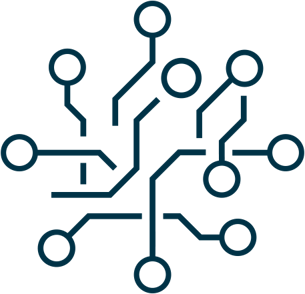When there is a lack of cybersecurity measures and constant cyber threats, businesses cannot thrive. To foster growth and success, it is imperative for businesses to prioritize and enhance the safety of their data and the overall health of their IT environment.
Hackers are always finding new ways to penetrate an organization ‘s network and get access to sensitive client information, while every organization in today’s era relies on digital communication, which may leave them vulnerable to attacks on public networks.
An organization's ability to attract and retain consumers, as a result of maintaining their trust and confidence, depends on the extent to which they invest in security. It is thus important to monitor the efficacy of security measures so that organizations can enhance their security posture and build a trustworthy security wall that can safeguard the data of their clients and their businesses.
Important Metrics for the Effectiveness of Cybersecurity Measures
Regular cybersecurity assessments can help organizations improve their security strategies ensuring they are keeping up with the latest threats and vulnerabilities. The following are important metrics that enable organizations to analyze what is working and what is worsening, facilitating decision-making about areas for improvement in their security strategies.
- The number of successful cyberattacks prevented: This helps organizations understand how well their security measures are working and adjust their security strategies and investments accordingly.
- The amount of time it takes to detect a breach: This is a crucial element because the faster an organization identifies an attack, the greater the odds it can contain with minimal damage.
- The amount of time it takes to respond to a breach: the average time it takes to recover from a system failure from the time when an organization are first alerted to that failure.
- The overall cost of implementing and maintaining security measures: There are several factors that determine cost of security practices, which should align with business requirements while ensure the proper levels of security.
By considering all these factors, organizations can make informed decisions about their security strategies and investments to ensure they are adequately protecting their data assets and align their security strategies with their business requirements.
Actions to Enhance Cybersecurity Posture
Cybersecurity is an ongoing process that needs to be regularly evaluated and adjusted to deal with the malicious actors who are constantly exploiting vulnerabilities to break into systems. Organizations should consider the following actions to ensure the effectiveness of their security measures.
1. Regular security audits and risk assessments
Regular security audits and risk assessments can help identify any weaknesses in the system and allow for proactive measures to be taken. It is also important to stay up-to-date with the latest security technologies and trends to ensure that the organization is utilizing the most effective tools and strategies available.
Regular audits and assessments can also assist in identifying any gaps in compliance. This ensures organizations comply with industry regulations and standards and minimize the risks of security breaches. Additionally, it's important for organizations to have a plan in place for continuous improvement of their security measures to stay ahead of evolving threats.
2. User awareness and training
User training and awareness programs can also contribute to the overall effectiveness of an organization's security measures.
Even the most advanced security solutions can be compromised if users are not properly trained on how to use them or are unaware of potential threats. Therefore, regular training sessions and awareness campaigns should be conducted to ensure that users are equipped with the knowledge and skills necessary to maintain a secure IT environment.
3. Network traffic analysis
Network traffic analysis can be used to establish the security baseline and provide visibility into network activity. It can aid in identifying abnormal patterns of behavior that may indicate a breach or compromise of the network. By analyzing traffic patterns, security teams can detect anomalies such as data exfiltration, unauthorized access attempts, and malware infections. This information can then be used to take proactive measures to prevent further damage and protect sensitive information.
Organizations should consider using not only network traffic analysis but also other security tools such as firewalls, antivirus software, and intrusion detection systems. This can help organizations have an effective security solution that can ensure they stay ahead of potential security threats and protect their sensitive information from being compromised.
4. Strong cybersecurity policies and procedures
Implementing strong cybersecurity policies and procedures, such as access controls and incident response plans, can also greatly enhance the effectiveness of security measures. Access controls limit who can access sensitive information or systems, while incident response plans outline the steps to be taken in the event of a security breach or incident.
By having these policies and procedures in place, organizations can better protect their assets and respond quickly to any threats or breaches that may occur. Additionally, regularly reviewing and updating these policies and procedures can ensure that they remain effective and relevant in the ever-changing landscape of cybersecurity threats.
Besides these proactive measures, partnering with trusted cybersecurity providers can provide organizations with expertise and support in developing and implementing comprehensive cybersecurity strategies. These providers can offer valuable insights into the latest security threats and trends, as well as provide effective guidance on how to mitigate risks and protect sensitive data. By partnering with a cybersecurity provider, organizations can also benefit from access to advanced cybersecurity technologies and tools that may not be available in-house. Furthermore, a cybersecurity provider can offer ongoing monitoring and support to ensure that cybersecurity measures are up-to-date and effective in preventing cyberattacks.
With the right combination of people, processes, and technology, organizations can enhance their security posture and safeguard their critical assets. Adnovum offers a range of cybersecurity services that help organizations effectively mitigate risks of cyber threats, while ensuring compliance.
📩 Sign up for our newsletter and gain access to exclusive executive insights and event invitations.





